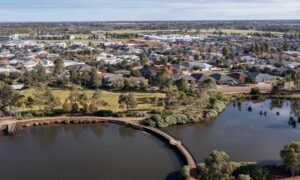The sub-title of this book corresponds to the titles of two programs Mary Beard presented in the BBC series Civilisations. Using the plural form distinguishes the 2018 series from the 1969 series Civilisation presented by Sir Kenneth Clark which gave an almost exclusively Euro-centric view of civilisation. The book contains an index, notes and suggestions for further reading which are very detailed and comprehensive.
Beard is a professor of classics at Cambridge University but this is not an academic text as it is written to accompany and expand on the television series. The question How Do We Look? is asking the reader to consider how and why we view art and representations of the human form, particularly in distinct ways.
The author cites her surprise in discovering what she had always thought of as ‘great art’ on a piece of Greek pottery was actually produced as an everyday object. As there are clearly as many ways of representing us as there are artists making the images, the author examines different images of the human form across time and geography – seeking to discover how the viewers might have made sense of the many and varied depictions.
Beard also reminds us that many of the images we see in galleries or museums are detached from their original context, which again makes a difference in how we see them. An instance of this is seen in the images of three portraits from Roman Egypt, made in late first/early second century CE. They appear far more modern with subtle light and shadow and are very ‘life-like’, which is odd as they were originally painted on coffins as a remembrance of the dead.
The second part of the book, The Eye of Faith, looks at the intersection of art and faith, examining how this dialogue has inspired representations of both gods and humans. This section begins with a discussion of how the rising sun at the equinoxes seems to balance on the central spire at Angkor Wat in Cambodia. The monument is adorned with a frieze of sculptures representing its original Hindu images which are combined with those of the royal Khmer dynasty who built it. By combining art and religion, the temple seeks to show the ‘truth’ of these beliefs, as well as reinforcing the god-given place of the rulers.
Readers are probably aware of the Taliban blowing up the Bamiyam Buddhas in Afghanistan or the destruction by Isis in the ancient city of Palmyra. However, Beard makes it clear the controversy surrounding religious images and buildings has been going on for millennia. She asks us to consider when does representation of god or gods become idolatry; or whether images of human figures, such as saints, distract the viewer from their concentration on the divine.
She examines Renaissance paintings, Catholic statues and Islamic decoration, which forbids the use of the human figure, and draws out aspects we may not have realised were there. In her discussion of the destruction of statues in Ely Cathedral, during the English Civil War, Beard notes that the head and hands were destroyed rather than the entire statue: ‘those parts people engaged with most intensely’ (page 186). And, as the broken statues remain in the Cathedral, they have become a new type of religious narrative – one about violence and conflict.
A great introduction to fascinating topics. I only wish we could watch the BBC series here.
Highly recommended.
Reviewed by Jan Kershaw
Rating out of 10: 9
Distributed by: Allen & Unwin
Released: May 2018
RRP: $34.99 hardcover























